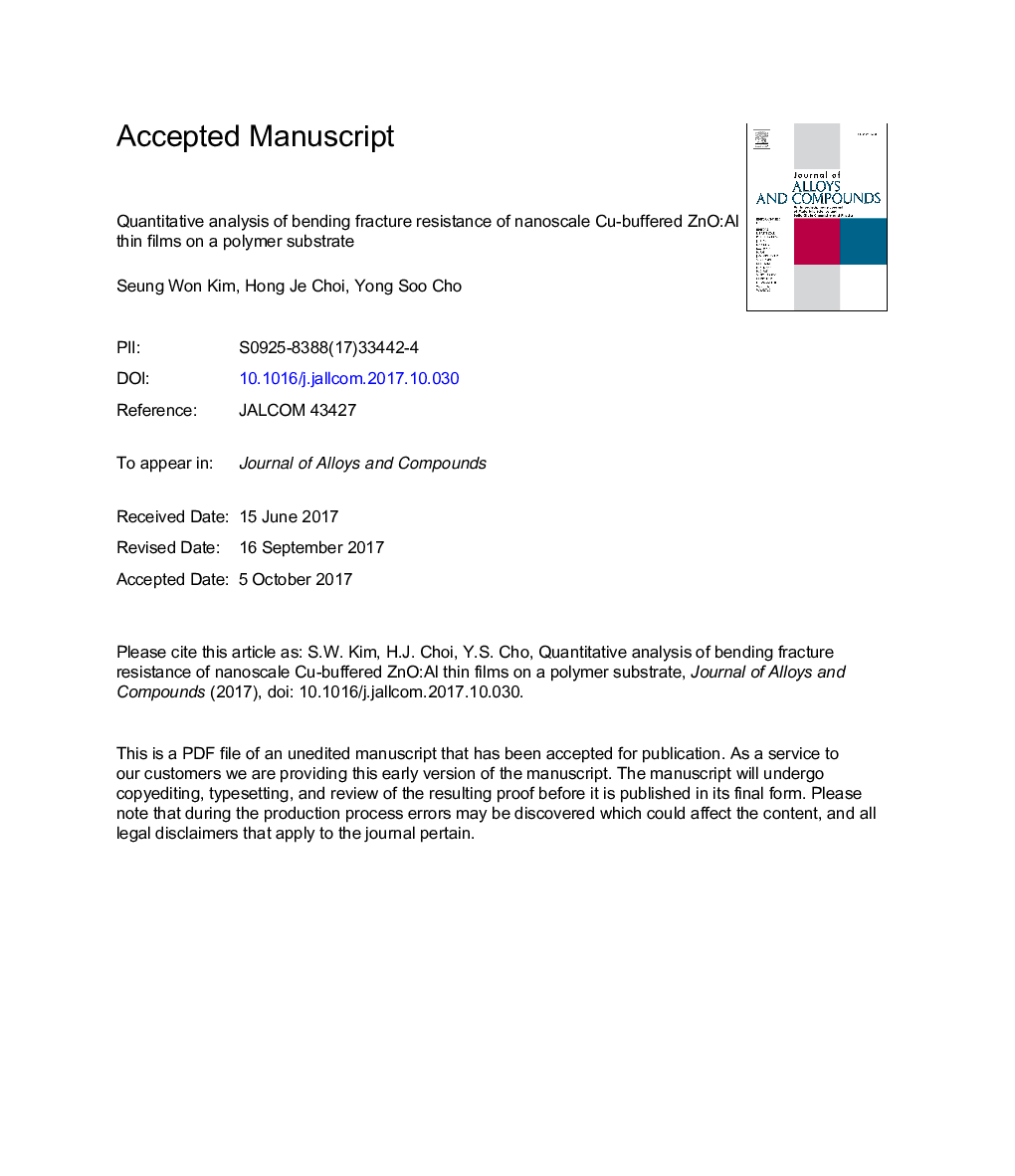| Article ID | Journal | Published Year | Pages | File Type |
|---|---|---|---|---|
| 7995217 | Journal of Alloys and Compounds | 2018 | 22 Pages |
Abstract
Improving the fracture resistance of fragile inorganic thin films under various bending conditions is critical in flexible thin-film systems. Here, we introduce a Cu-buffer-layer approach to evaluate the level of enhancement in the bending fracture behavior of Al-doped ZnO (AZO) thin films on the basis of quantitative mechanical parameters such as fracture energy, film strength and fracture toughness. These fracture behaviors of thin films sputter-deposited onto polyethersulfone substrates were observed to depend largely on the thickness of the Cu buffer layer. In the case of thin films with a 20Â nm-thick Cu buffer layer, crack-initiating bending strain was substantially improved from â¼1.04% to â¼1.37%; this corresponds to an improvement of â¼31.7%. The substantial improvement is attributed to the presence of the Cu buffer layer, which helps prevent the formation of cracks by absorbing crack-initiating tensile stress. The calculated values of fracture energy and film strength support well the Cu thickness dependence of fracture behavior under bending operation.
Related Topics
Physical Sciences and Engineering
Materials Science
Metals and Alloys
Authors
Seung Won Kim, Hong Je Choi, Yong Soo Cho,
